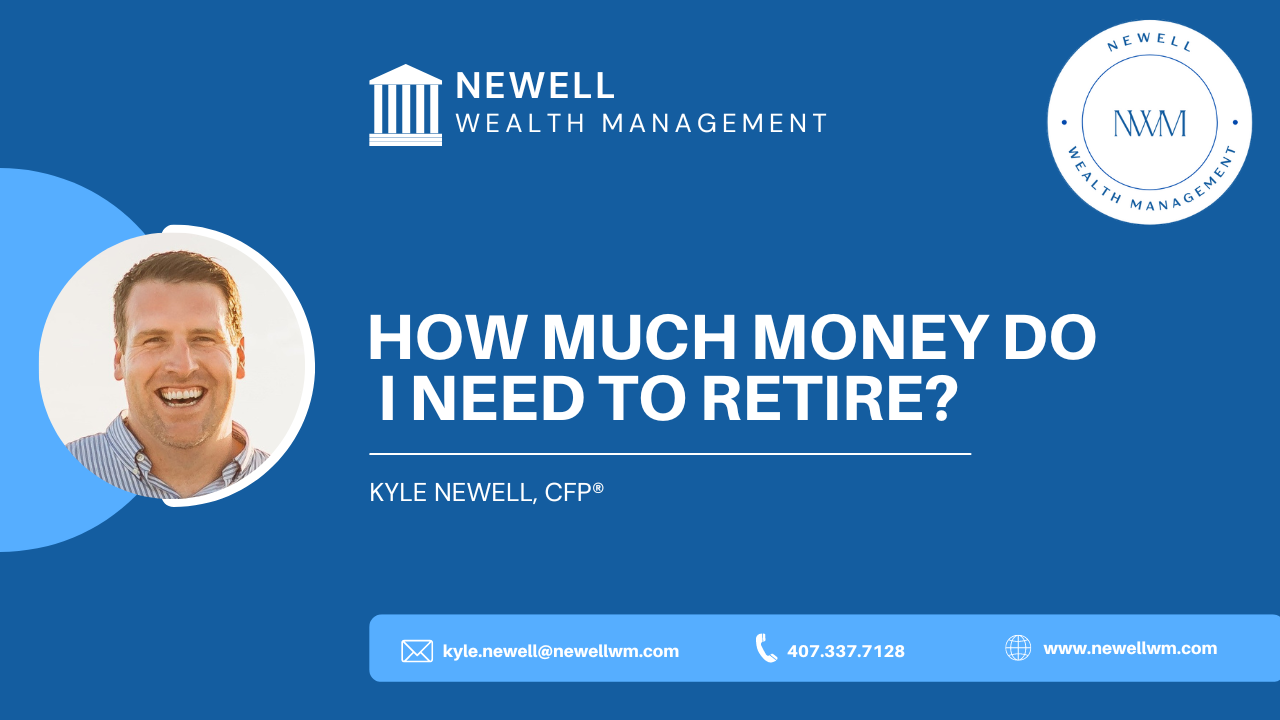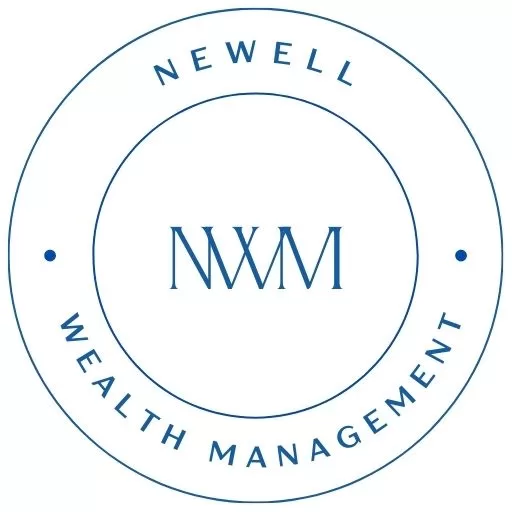How Much Money Do I Need to Retire?

How much money do you need to retire? It’s a good question and one I get often. Before we jump into how to answer it, here is a quick story. I was talking with a client who was very focused on reaching half a million dollars before she retired. She was intent on getting that number. I inquired as to how she came up with that specific number.
Once we unpacked it a little bit, $500,000 was the number someone told her 20 years ago that the average person needs to retire. It was planted into her mind, and that was what she was working for. Thankfully, she hit that number, but as we talked, the reality was that number really had no meaning or intention in her specific situation. She was able to live well from other sources of income and didn’t even need that much money to be able to retire.
Every person, and situation, is unique. I want to help you think through how much money you really need to retire. Some people say $1 million. Some say $3 million. Others, like my client, say $500,000. The answer is that it really does depend. How should you think through figuring it out? These five steps will help.

Step 1: How much income do you need?
Start by looking at the following:
- Your expenses
- Ongoing travel
- Passion projects
- Charitable donations
- Other miscellaneous expenses
How much money do you need to cover your expenses on a month-by-month, year-by-year basis? The number you generate is the foundation for calculating your retirement income needs.
Step 2: What are the tax ramifications associated with your income?
For example, if you are retired and pulling money out of your old 401 K, it will be taxed differently than if you have bought a lot of company stock along the way that you plan to live off of. Those two income options have different associated tax ramifications.
Don’t forget that Uncle Sam is the silent partner of everyone, as they say, and he wants his percentage. Once you retire, different tax ramifications are associated with different types of savings and sources of income, like a pension or Social Security. They are all going to be taxed differently.
With that said, you need to add your taxes to the number you calculated in step 1. Note that a range of tax options could be required, or you may pay no taxes based on where your income is coming from. Take your gross number from your expense need and add the tax amount to it to get the gross number you require on a month-by-month or year-by-year basis.
If you would like more information on retirement taxes, I discuss it here.
Step 3: Subtract any guaranteed sources of income.
I work with many clients who work at Disney and have a pension plan. They can back out the amount they will receive monthly or annually from their pension. Most everyone can claim Social Security, another income source you can subtract.
If you know those sources will be guaranteed either from the government or your company, and you feel good about those guarantees, then go ahead and back out those numbers. You don’t need to save for that money because it’s already provided either by your company, the government, or both.
Step 4: Make an assumption.
With your month-to-month number, you now want to make an assumption. This is where financial planning is challenging because we want to make, hopefully, a safe assumption. The premise is how much money you think you’re going to be able to earn on your total savings and assets.
This is one of the most challenging parts of figuring this out. You want to have a comfortable enough assumption of your average return. There are a few things that determine your assumptions:
- How comfortable you are with risk
- How much risk you have to take
- Your financial situation
- The market environment
Assuming the rate of return you will have is not the easiest step, but it cannot be overlooked. Take your calculated number after step 3 and multiply that by your average assumed return to get a lump sum in today’s value. Do not forget to factor in potential year-over-year inflation. This is the number you are going to need moving forward.
Step 5: Add one-off expenses back to that number.
Many people factor their expenses as day-to-day but forget about potential one-off expenses or one-off annual expenses. These can be things like long-term care. Who is paying for coverage as you go through the aging process, which could be several years?
One client wants to restore his Camaro to its former glory. Another wants to travel. Both are examples of one-off or one-off annual expenses.
Example
You may feel a little overwhelmed so let’s walk through an example. Let’s assume you’ve gone through the process and determined you need $5000 a month (net) to live off. You need to add taxes back on top of that income tax level. You should work with a tax advisor to determine the exact number, but let’s say, for example, you’re going to pay an extra $500 a month for taxes. If your Social Security and pension combined will be $3000 a month, your calculation so far should look like this.
$5000 + $500 = $5500 – $3000 = $2500
The $2500 is what you need to make per month. How do you do that?
In this example, let’s now assume your average rate of return is 4%. You would need about $750,000 of assets to generate $2500 consistently each month while leaving the principal money in the account. There are other calculations you can do, and the 4% is no guarantee. It’s an example to show how the numbers work.
$750,000 x 4% = $30,000 / 12 = $2500
Some clients tell me they just want to bounce that last check. They don’t care about leaving any money behind. If that’s you, then you can use a different number. There are other calculations to model running out of money by the time you are deceased. The problem is that most people don’t know when they will pass away and so it’s best to leave the principal intact and live off the earnings generally. You don’t want to spend your last dime at 80 and live to 89.
Take your total asset number and add inflation. Right now, inflation is very high, but that’s not always the case. You need to figure out an average inflation rate because it’s a guarantee that inflation will occur.
Finally, add in your one-off expenses. By the time you finish, you end up with $1.2 or $1.3 million as the number you need to have to be able to retire comfortably and feel good about making it all the way to age 95.
Some people think that is a considerable number. Others think it’s relatively small. Some are everywhere in between. Don’t panic. Remember that your number is specific to your situation. This is just an example of how to work through the steps to determine how much money you need to be able to retire, do it in a way that can be flexible enough, and still give you a good target to run towards.
If you would like some guidance or are unsure about your specific situation, I would be happy to discuss it with you.
Important Information
Newell Wealth Management, LLC (“NWM”) is a registered investment advisor offering advisory services in the State of FL and in other jurisdictions where exempted. Registration does not imply a certain level of skill or training. The presence of this website on the Internet shall not be directly or indirectly interpreted as a solicitation of investment advisory services to persons of another jurisdiction unless otherwise permitted by statute. Follow-up or individualized responses to consumers in a particular state by NWM in the rendering of personalized investment advice for compensation shall not be made without our first complying with jurisdiction requirements or pursuant an applicable state exemption.
All written content on this site is for information purposes only and is not intended to provide specific advice or recommendations for any individual. Opinions expressed herein are solely those of NWM, unless otherwise specifically cited. Kyle Newell and NWM are neither an attorney nor an accountant, and no portion of this website content should be interpreted as legal, accounting or tax advice. Material presented is believed to be from reliable sources and no representations are made by our firm as to other parties’ informational accuracy or completeness. There is no assurance that the views or strategies discussed are suitable for all investors or will yield positive outcomes. Investment involves risks including possible loss of principal and unless otherwise stated, are not guaranteed. Any economic forecasts set forth may not develop as predicted and are subject to change. All information or ideas provided should be discussed in detail with an advisor, accountant or legal counsel prior to implementation.
